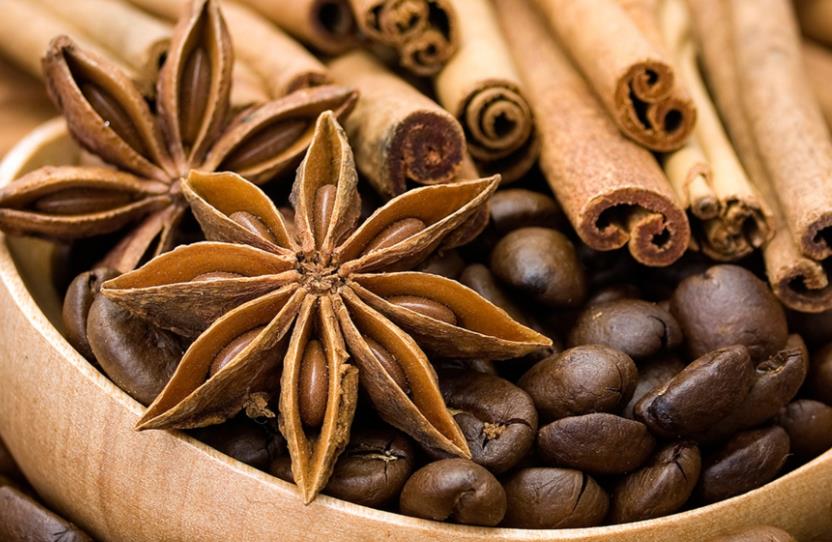The production of coffee beans in the world's major coffee exporters

The output of the world's major coffee exporters is on a downward trend due to various factors, while global coffee demand is rising again. Some analysts pointed out that this will lead to an annual increase of about 20% in international coffee bean prices in the next few years. With the discovery and development of new producing areas such as Yunnan, the distribution of coffee producing areas will be more scattered, which will also be conducive to the price stability of this commodity. Of course, for Starbucks and other companies, to promote the coffee brand "Yunnan" to the world, the goal is also aimed at the vast local market.
Haiti: a forgotten place
In 1725, Haiti, which faces the Caribbean to the south, officially began to grow coffee in the north. At one point, 60% of the coffee on the European market came from Haiti, which produced more of this agricultural product than the entire West Indies combined. However, even in the final selection stage, Haiti does not distinguish between the quality of coffee beans on each farm, which are intermingled with the good and the bad. At the beginning of the 19th century, with the independence of Haiti from France, the sales of agricultural products represented by coffee were all cut off, and the coffee production center immediately shifted on a large scale, and Central America, South America, Africa and other places became the focus. Haiti now produces and exports only about 600000 bags of coffee a year.
Yemen: the declining "aristocrat"
Yemen is the first country in the world to grow coffee on a large scale. When coffee arrived here in the early 6th century, the local people began to grow it as a cash crop on a large scale. In Yemen, coffee is mainly produced in the western mountains, and the coffee produced here is collectively known as "mocha coffee" because it has historically been exported from the Yemeni port of Mocha. It is a pity that the good times do not last long. In the face of political turmoil and unplanned cultivation, the production of mocha is very unstable, and the current shortage of water resources and soil, as well as the recovery cost of coffee itself, has also led to a continuous reduction in the acreage of coffee.
Brazil: the throne of danger
There is no doubt that without Brazil, the world's coffee production would have been reduced by a large part, accounting for 1/3 of global consumption. There are many kinds of local coffee, but because of zhengfu's simple pursuit of yield, there are not many varieties of high-quality coffee. Brazil has a total of 21 states for the mass market, of which 17 produce coffee. However, Brazil is also an area with a high incidence of natural disasters, although the acreage largely makes up for its impact on production, but in the event of serious local weather disasters, it will also cause great fluctuations in global coffee prices.
Jamaica: few but good
Although the planting area of coffee is not large in Jamaica, when it comes to the "Blue Mountain Coffee", which is mainly produced in Jamaica, everyone knows that this kind of coffee is recognized as the best coffee in the world. The ridge terrain of Jamaica, as well as the local cool weather, foggy, frequent precipitation environment, create the unique flavor of "Blue Mountain Coffee". At the same time, the reason why it can maintain its place in the coffee bean industry is also related to the local business policy of Jamaica, where zhengfu does not continuously increase its output value like other coffee-producing countries, but pays more attention to quality. The coffee output of Jamaica is only a few thousandths of that of other coffee countries, which promotes both the quality and price of "Blue Mountain Coffee".
Colombia: all the time
Unlike other coffee-producing countries, which can only produce one season a year, Colombia can produce coffee continuously for a year because of its special geographical location, which has gradually raised the country's position in world coffee production. There was a poor harvest of coffee in Colombia last year, and annual production fell by 30%. In addition to the "trouble" of the climate, it is also related to the local efforts to improve tree species and improve the quality of coffee. However, coffee cultivation in Colombia still retains the state of small-scale peasant economy, which is obviously not conducive to the long-term stability of production, thus at a disadvantage in the competitive landscape.
Indonesia: representative of Asia
There is no doubt that Indonesia was once the leading producer of established coffee in Asia. The best coffee growing areas in Indonesia are in Java, Sumatra and Sulawesi, and the main export markets are the European Union, the United States and Japan, which also reflects the excellent quality of coffee in the country. Indonesia's coffee exports have been declining steadily over the past few years, mainly due to reduced coffee production and low productivity. Its position as the dominant coffee in Asia is also gradually being replaced by Vietnam.
Vietnam: a rising star
Coffee cultivation is currently second only to rice in Vietnam's agricultural exports. In 2000, Vietnam exported 12.5 million bags of coffee, making it the second largest coffee exporter in the world, pushing Colombia, once famous, into third place. Today, Vietnamese coffee has been exported to more than 50 countries and regions. At the same time, coffee is also very popular in Vietnam, with an average of 300000 farmers participating in coffee cultivation each year. However, the coffee industry in Vietnam is still weak, and the most important thing is to improve efficiency and quality in a series of processes such as production, processing and trade, so as to stabilize the local coffee industry in Vietnam.
China: new World
In fact, coffee cultivation in Yunnan and Hainan has a long history, especially in Yunnan, which can be traced back to 1892. At present, more than half of the coffee beans produced in Yunnan have been used for export. Zhengfu in Yunnan Province plans to invest 3 billion yuan to increase the output of coffee beans from the current 38000 tons to 200000 tons by 2020, and the coffee planting scale will also increase from the existing 26700 hectares to 100000 hectares. In contrast, Hainan coffee, represented by Fukuyama, has not been able to "go out" due to many reasons, such as small production scale, low output, weak marketing, lack of large enterprises, large capital operation and so on.
Important Notice :
前街咖啡 FrontStreet Coffee has moved to new addredd:
FrontStreet Coffee Address: 315,Donghua East Road,GuangZhou
Tel:020 38364473
- Prev

Explain why shit-like coffee worth 1500 yuan is so expensive?
It is not unreasonable for coffee to be called "black gold". Just looking at the fact that coffee is readily available in convenience stores and supermarkets in Taiwan, you know the potential of "black gold" and the business opportunities created are frighteningly high. But do you know how much a cup of coffee can cost? The answer is 1500 yuan for a cup. Can you imagine drinking a cup of coffee worth 1500 yuan? And this cup of coffee
- Next

Introduction of Coffee and Coffee knowledge from the Perspective of Nutrition
1 introduction to coffee knowledge: coffee is one of the main drinks for westerners. The seeds obtained by removing the pericarp and most of the seed coat after the fruit is ripe are called raw coffee or coffee beans. Raw coffee is roasted and ground to get coffee powder, which can be used to make a drink. Coffee tastes bitter, has a specific flavor, contains caffeine alcohol and 1.3% caffeine alkaloids, and is an anesthetic, diuretic, excitatory and cardiotonic drug. Roasting
Related
- Detailed explanation of Jadeite planting Land in Panamanian Jadeite Manor introduction to the grading system of Jadeite competitive bidding, Red bid, Green bid and Rose Summer
- Story of Coffee planting in Brenka region of Costa Rica Stonehenge Manor anaerobic heavy honey treatment of flavor mouth
- What's on the barrel of Blue Mountain Coffee beans?
- Can American coffee also pull flowers? How to use hot American style to pull out a good-looking pattern?
- Can you make a cold extract with coffee beans? What is the right proportion for cold-extracted coffee formula?
- Indonesian PWN Gold Mandrine Coffee Origin Features Flavor How to Chong? Mandolin coffee is American.
- A brief introduction to the flavor characteristics of Brazilian yellow bourbon coffee beans
- What is the effect of different water quality on the flavor of cold-extracted coffee? What kind of water is best for brewing coffee?
- Why do you think of Rose Summer whenever you mention Panamanian coffee?
- Introduction to the characteristics of authentic blue mountain coffee bean producing areas? What is the CIB Coffee Authority in Jamaica?

